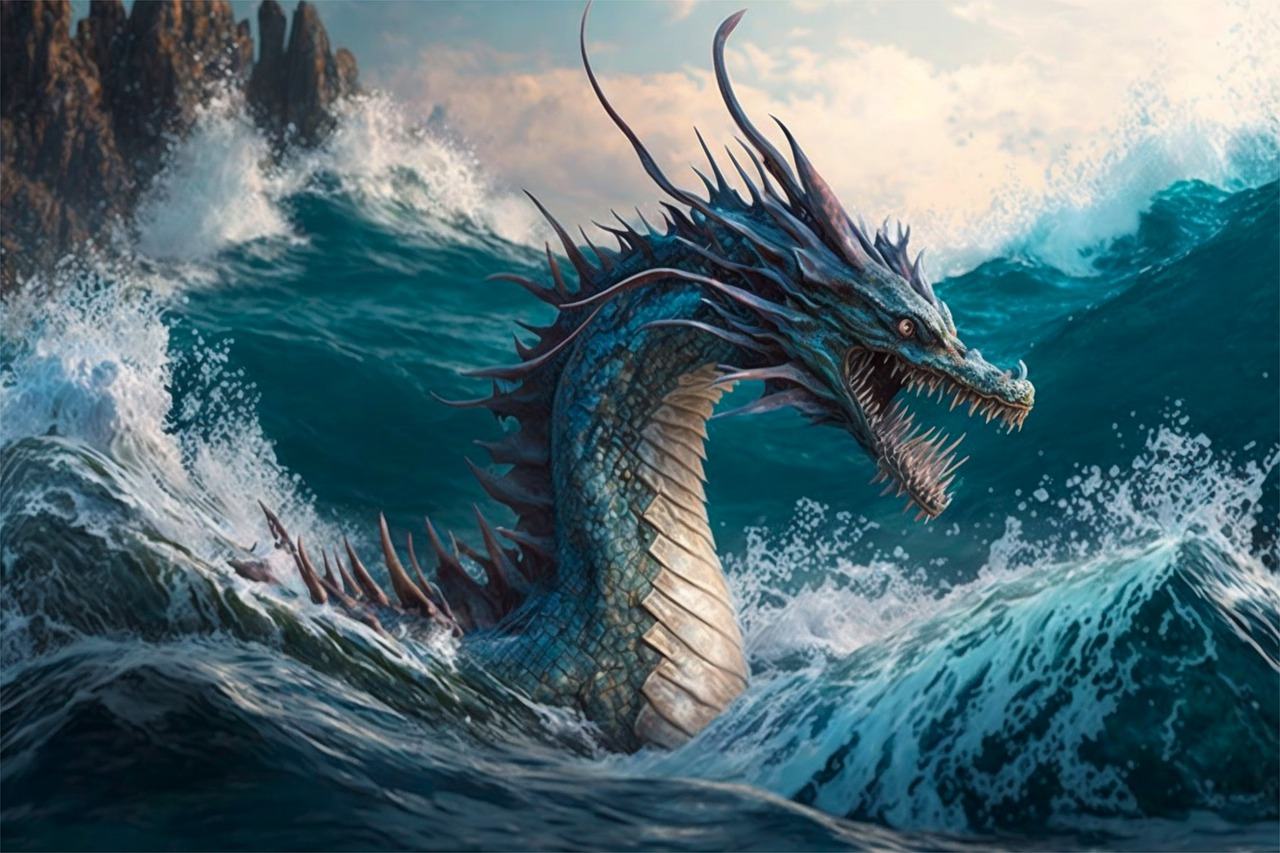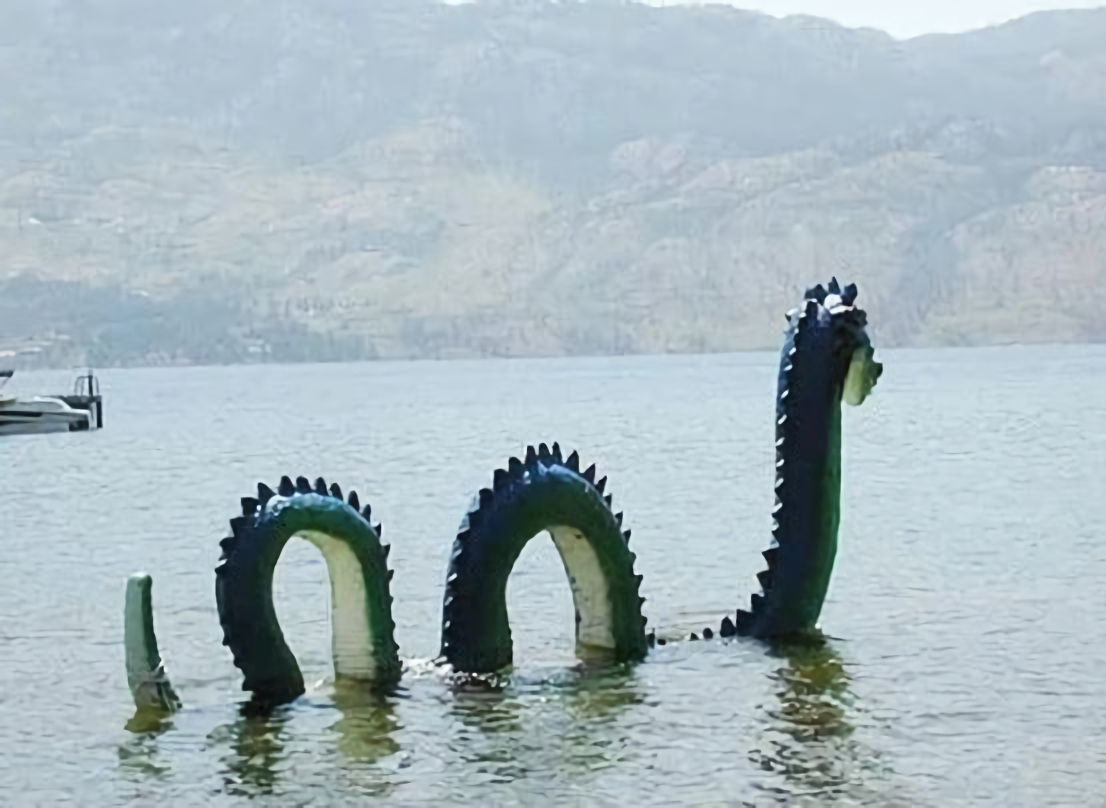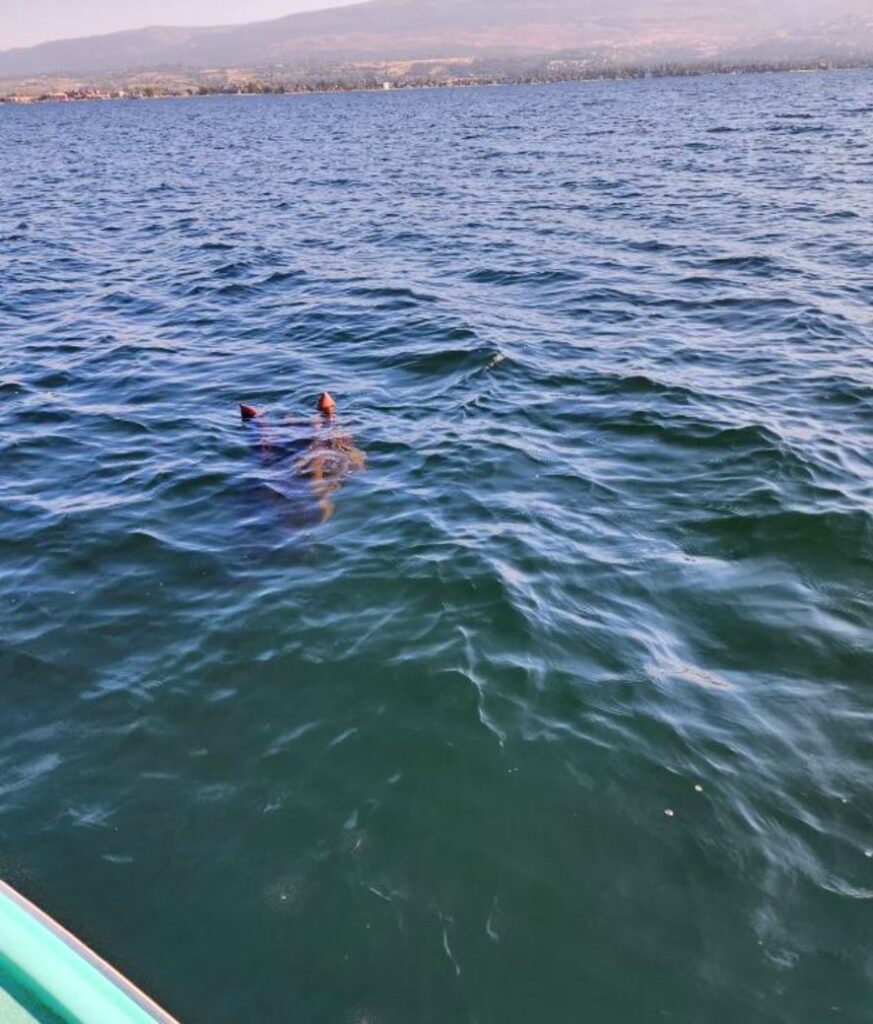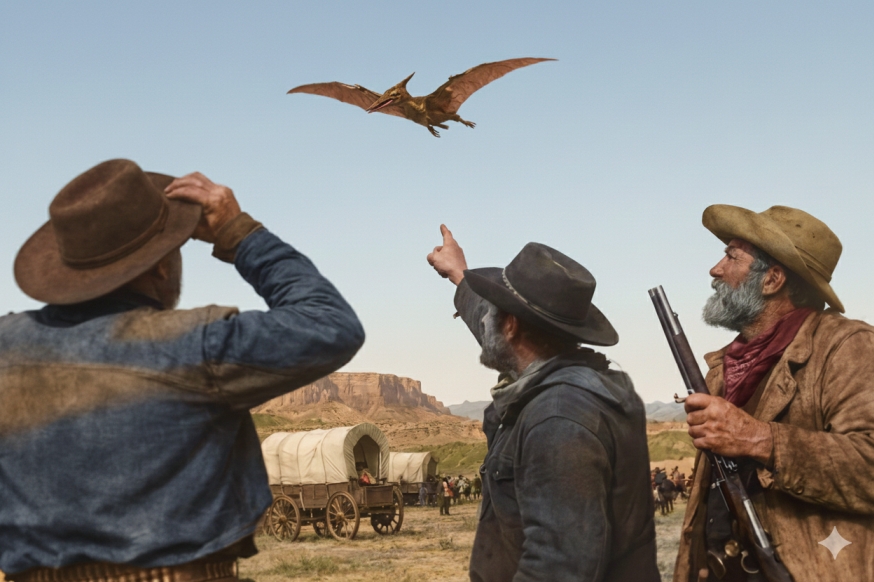
Deep within the mysterious waters of Okanagan Lake in British Columbia, Canada, lurks a creature that has captured the imagination of locals and visitors alike for over a century. This enigmatic creature, known as the Ogopogo, is often described as a lake monster resembling a giant serpent or prehistoric creature. With numerous sightings reported throughout history, the legend of the Ogopogo has become deeply entrenched in the folklore of the region.
The origin of the Ogopogo legend can be traced back to the indigenous Syilx people, who have inhabited the Okanagan Valley for thousands of years. According to their oral traditions, the lake monster has long been a part of their mythology and a symbol of both fear and respect. They referred to the creature as “N’ha-a-itk” or “snake in the water.” Early European settlers adopted the name Ogopogo, derived from a popular music hall song of the early 20th century, and the legend gained wider attention. The first recorded sighting of the Ogopogo by non-indigenous people dates back to the late 19th century. In 1872, Susan Allison and her husband claimed to have witnessed a creature with a horse-like head and a serpentine body swimming in the waters of Okanagan Lake. Their account, although met with skepticism at the time, paved the way for future sightings and investigations.
Since then, there have been numerous alleged encounters with the Ogopogo. In 1926, a sighting by Mrs. John Allison and her son Jim caused a sensation in the local community. They reported seeing a creature about 15 meters long, with a head resembling a sheep, in the lake. This event sparked significant interest and fueled public curiosity about the elusive monster.
In the years that followed, sightings of the Ogopogo became more frequent, with various witnesses describing similar characteristics. The creature was often described as having a long, serpentine body, a horse-like head, and a series of humps or coils visible above the water’s surface. Some eyewitnesses even claimed to have seen the creature’s large, glowing eyes, adding an extra level of intrigue to the legend.

The Ogopogo legend reached its peak of popularity in the 1970s when a surge of sightings occurred. In 1978, Richard Huls, a local resident, managed to capture a series of photographs that purportedly showed the creature swimming in the lake. These photographs generated widespread attention and sparked renewed interest in the existence of the Ogopogo. However, skeptics argued that the images could have been the result of a floating log or other natural phenomena.
During the 1980s, a local tourism agency offered a cash reward for a confirmed sighting of the Ogopogo. The creature even gained attention from Greenpeace, which listed it as an endangered species and called for its filming instead of capture. In 1980, around 50 tourists at Kelowna Beach claimed to have watched the Ogopogo for approximately 45 minutes, with one tourist, Larry Thal, managing to capture a 10-second 8mm film. Some skeptics suggested it could have been a pair of otters instead. In 1989, John Kirk reported a sighting of an animal measuring 35 to 40 feet in length. He described the creature as having five sleek, jet-black humps and a lashing tail, estimated to be traveling at around 25 miles per hour.
Another notable sighting occurred on July 24, 1992, when Paul Demara videotaped objects moving just below the surface of the water at a considerable speed of approximately 8 kilometers (5 miles) per hour. The video captured a boat towing a water skier who fell into the water near the object. Despite multiple videotapes showing what appeared to be multiple animals, skepticism remained, with some suggesting the objects were merely otters.
In 2011, a cell phone video surfaced, showing two dark shapes in the water. Some suggested that the video depicted floating logs rather than the Ogopogo, citing the lack of distinct features such as humps or a head. More recently, in September 2018, three sightings were reported, with one witness describing a giant snake-like creature measuring approximately 49 feet in length. Over the years, numerous expeditions and investigations have been conducted to uncover the truth behind the Ogopogo mystery. In 2005, a team of researchers led by professor Paul Moran from the University of British Columbia used advanced sonar technology to scan the depths of Okanagan Lake. While they discovered some intriguing underwater structures, they did not find any conclusive evidence of the creature’s existence.

The most recent sighting of the Ogopogo Lake monster came in October 2022. During a pleasantly warm day on the lake, Dale Hanchar, his wife Colleen, and their friend Myrna Germaine Brown found themselves captivated by an enigmatic sight that appeared before them. As a seasoned boater, Hanchar’s initial concern was to assess the situation for any potential dangers that might need to be marked to ensure the safety of other boaters. However, as they continued their journey, their curiosity got the better of them. Hanchar couldn’t shake off the feeling that something wasn’t quite right. The trio collectively decided to take a closer look, fueling their desire for answers.
They maneuvered their sailboat to within a mere 10 feet of the object, seizing the opportunity to capture a photo. Puzzled by what lay before them, they engaged in a discussion, eliminating various possibilities from their minds but unable to come to a definitive conclusion. Upon returning home and scrutinizing the photo, their bewilderment deepened. The peculiar protrusions, about three feet apart, ruled out mundane explanations such as plants, kelp (given that it was a lake and not the ocean), sturgeons, or an inverted, deceased deer. Each possibility seemed to fall short of providing a satisfactory answer. Intrigued by the mystery they had encountered, Hanchar began researching to shed light on the perplexing object. However, his search yielded no immediate answers. This only served to intensify his curiosity and raise further questions.
Eager to find out if others had witnessed a similar sight, Hanchar wondered if anyone else had seen the object or if it had washed up on a nearby shore. Perhaps it was an errant lawn decoration that had somehow found its way to the lake. The uncertainty surrounding the object’s nature and its subsequent fate only heightened their intrigue. The trio found themselves confronted with a baffling enigma, urging them to seek answers beyond their own limited perspective. Hanchar’s lingering queries resonated deeply as he contemplated the possibility of an unidentified phenomenon residing within the lake, its secrets hidden from the world.
While the object’s true identity remains elusive, Dale Hanchar and his companions are left with a sense of wonder and curiosity. Their accidental encounter has ignited a quest for knowledge, prompting them to explore every avenue in search of the truth. As they continue to share their story and seek further information, they hope to unravel the mystery that has captured their imagination and left them yearning for answers.
The legend of the Ogopogo continues to thrive in the region. It has become a symbol of local identity and a significant tourist attraction, drawing visitors from all over the world. The city of Kelowna, located on the shores of Okanagan Lake, even hosts an annual Ogopogo festival, featuring parades, exhibitions, and activities dedicated to celebrating the mythical creature. Recent advancements in technology and increased public interest have led to a rise in amateur investigations and expeditions. With the advent of drones and underwater cameras, enthusiasts and researchers have been able to explore the depths of Okanagan Lake in greater detail, hoping to capture concrete evidence of the Ogopogo’s existence.

While many sightings and photographs have emerged claiming to depict the Ogopogo Lake Monster, none have been universally accepted as conclusive proof. Critics argue that most sightings can be attributed to misidentifications of known animals, such as logs, swimming waterfowl, or large fish. Additionally, optical illusions, weather conditions, and hoaxes have further contributed to the skepticism surrounding the creature’s existence.
However, believers in the Ogopogo remain steadfast in their conviction that the creature is real. They point to the long-standing indigenous traditions and the sheer number of reported sightings as evidence that there is more to the legend than mere folklore. For them, the lack of definitive proof only adds to the allure and mystery surrounding the Ogopogo. Regardless of whether the Ogopogo is a physical creature or a product of myth and imagination, its impact on the region is undeniable. The legend has become an integral part of the cultural fabric of the Okanagan Valley, attracting tourists, inspiring artwork, and generating lively debates among locals and visitors alike.
It remains an enduring symbol of mystery, curiosity, and the unknown. Whether one chooses to believe in the existence of the Ogopogo or sees it as a captivating tale, the legend of the lake monster serves as a reminder of the enduring power of folklore and the allure of the unexplained.
Current sights of Ogopogo:
https://ogopogoquest.com/sightings-most-recent.php
VISIT MYSTIC SCIENCES TO READ MORE ARTICLES!


